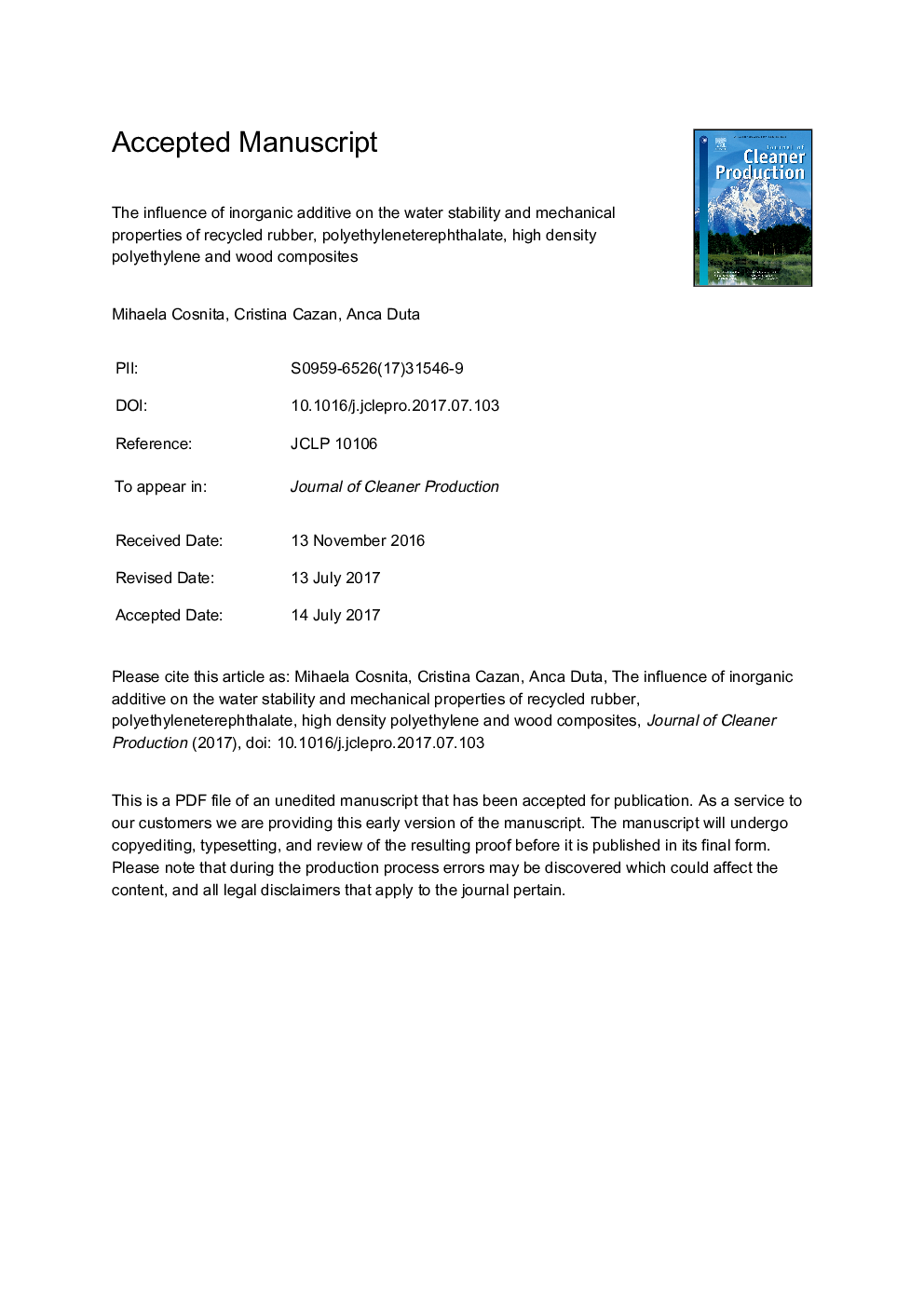| Article ID | Journal | Published Year | Pages | File Type |
|---|---|---|---|---|
| 5480034 | Journal of Cleaner Production | 2017 | 23 Pages |
Abstract
One of the major challenges that mankind have to face now-a-days is the huge amount of waste with negative impact on the environment. One sustainable and feasible path is recycling, by using it as second raw materials for new added value products. In this way, “all waste” composites with rubber-polyethylene terephthalate (PET)-high density polyethylene (HDPE)-wood were prepared, via the compression molding technique. The aim of this work is to assess the water stability of the rubber-PET-HDPE-wood blend, when adding small amounts of CaO nanoparticles as possible moisture trackers. The static stress-strain behavior and the compression properties of the composites were experimentally measured. The composites were characterized in terms of wetting behavior (contact angle measurement), chemical bonds (FTIR), crystalline structure (XRD), and morphology (SEM, AFM). The experimental results outline optimal water stability and mechanical performance for the composite samples containing 1 wt% CaO obtained at lower curing temperatures, while for higher processing temperature (190 °C), CaO 0.5 wt % is recommended.
Related Topics
Physical Sciences and Engineering
Energy
Renewable Energy, Sustainability and the Environment
Authors
Mihaela Cosnita, Cristina Cazan, Anca Duta,
